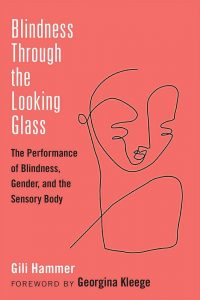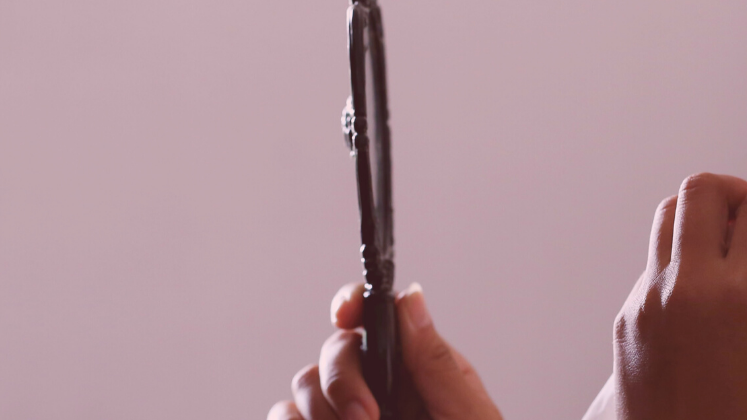In Blindness Through the Looking Glass: The Performance of Blindness, Gender and the Sensory Body, Gili Hammer draws on the first-person narratives of 40 blind women in Israel and ethnographic fieldwork to challenge visuality as the dominant mode of understanding and experiencing gender identity, visual culture and the sensory body. Devon Healey recommends this book as an essential resource for Women’s and Gender Studies, Disability Studies and, it is her hope, Blind Studies.
Blindness Through the Looking Glass: The Performance of Blindness, Gender and the Sensory Body. Gili Hammer. University of Michigan Press. 2020.
 It is not usually the case that someone reviewing a book reveals that they are sighted; indeed, that would be an odd thing to do. However, it seems somehow necessary for someone reviewing a book on blindness such as this one, Blindness Through the Looking Glass: The Performance of Blindness, Gender and the Sensory Body, to reveal that they are blind. How this is necessary, I am not exactly sure. But, I am blind and I am reviewing this book.
It is not usually the case that someone reviewing a book reveals that they are sighted; indeed, that would be an odd thing to do. However, it seems somehow necessary for someone reviewing a book on blindness such as this one, Blindness Through the Looking Glass: The Performance of Blindness, Gender and the Sensory Body, to reveal that they are blind. How this is necessary, I am not exactly sure. But, I am blind and I am reviewing this book.
I have often thought that I experience my blindness through a looking glass and this looking glass is sight. I have felt the watchful presence of sight, its eyes fixed on my body, as I move in and through the world; a fixation that at times seems as though it is judgmental. I watch myself in its mirror as it looks at me and judges my performance of blindness. How close I may be to sight or how far from it I am is the subject of its gaze. Am I looking as though sight is the dominant reality? Am I too blind or not blind enough? These are the types of questions that haunt blind people as we move in the visual world. This book does not shatter or even change the looking glass through which I experience my blindness but rather tilts it. This tilt shifts the perception of the looking glass to reveal not judgment, but something different — a difference that is not merely steeped in the rhetoric of blindness as a different way of seeing the world. Instead, the revelation of this tilt of difference opens the possibility of the beauty of blindness.
Gili Hammer’s tilted approach to the looking glass offers the most watched subjects of sight’s gaze, blind women, the opportunity to not only look back at, but also speak back to sight. ‘This book’, writes Hammer, ‘challenges seeing as the dominant mode though which we understand gender, social performance, and visual culture’ (1) and indeed, I believe it does.

First-person narratives from 40 blind women between 19 and 66 years of age within the Israeli context regarding gender identity, dating and relationships, gender roles, performances of student, employee, friend, partner, wife and mother, as well as the navigation of religious traditions and customs, all reveal the richness of the sensory body and the unseen world through blindness. Hammer organises these interviews into three sections — a discussion of gender identity; visual culture; and the sensory body. The introduction offers a detailed description of her ethnographic methodology and the ethics surrounding researcher and researched relations. Hammer comments throughout the book that she and many of her research subjects became good friends, noting that many offered their input on the writing, organisation and subject matter of the final copy.
Making use of anthropology and disability studies, Chapter Three, ‘Socialization Toward Visual Norms’, highlights how blind women feel the Western gaze on their bodies, a feeling that influences how they understand beauty and visual expression through fashion. What is of particular interest in this chapter is the hint of a language of blindness. Interviewees reflect on how fashion magazines were translated into braille and recorded as audio files for accessibility purposes, communicating ideals around femininity and body image, but no attempt was made to translate visual language. The notion that blindness is not merely a ‘technical problem requiring technical solutions’ (52) (e.g. accessibility to print material), but rather is a cultural identity replete with our own language is a provocative one. Indeed, there are many ‘hints’ within this book as to how blindness may be understood as a cultural identity, one that has been overlooked and dismissed as merely lack of sight. Hammer makes many suggestions throughout this work as to the cultural identity of blindness, leaving room for her readers to continue theorising what I call the visual politics of being.
It is crucial to note that Hammer is not blind. She is a sighted women doing research on blind women, and as such, there is a tension that runs between and among the pages of this book, a tension that is not lost on Hammer. From the beginning stages of her work Hammer writes that she was asked, ‘Are you blind?’ before many subjects agreed to participate in her study. I must admit that I too found myself asking similar questions. Do we, blind people, need another book written about us by a sighted person? Should only blind people write about blind people? Should there be something called Blind Studies where blind people are the authority figures?
In her Epilogue, Hammer provides an autoethnographic sensory reflection on her relationship to and with the visual construction of gender and identity that tilted how I approached and related to her and to her book. Through a rich sensory description of her childhood home in Nahalal, a cooperative farming village in the Jezreel Valley of North Israel, Hammer’s connection to the simultaneous hypervisibility of blindness and the invisibility of gender that many of the blind women in her book expressed feeling is revealed. After recovering from a long illness that required her to be on bedrest, Hammer writes: ‘I had lost so much weight that year (and was skinny to begin with) that, at times, people gasped at the sight of me. My body reminded them of the Muselmann, the skeleton-like Holocaust survivors, spurring comments that made me horrifically ashamed of the way I looked’ (165). I am not suggesting that the visual representation or experience of Holocaust survivors and blind women are in any way the same. What I am suggesting is that Hammer’s layered experience of feeling the watchful eyes of sight on her body and of how that feeling shaped her understanding of self in relation to others is what connects both the researcher and researched, author and reader, sight and blindness, Hammer and me.
This book seeks to explore the world of the senses through the beauty that is blindness. Hammer tilts the looking glass reflection of sight and blindness as a binary ‘offering a more complex interpretation of the many ways blindness and sight, and sight and the other senses, are interdependent’ (90). This book is an essential resource for Women’s and Gender Studies, Disability Studies and, it is my hope, Blind Studies. Read this book.
Note: This review gives the views of the author, and not the position of the LSE Review of Books blog, or of the London School of Economics.
Image Credit: With a pink-grey background, the photograph depicts part of a hand holding up a looking glass in the middle of the frame, with the left-hand edge of the looking glass facing the camera. On the right-hand side of the frame, part of a hand is held up to the height of the looking glass mirror (Photo by Septian simon on Unsplash).





